2016 marks the 60th anniversary of the venerable hard disk drive (HDD). While new computers increasingly turn to solid state disks (SSDs) for main storage, HDDs remain the champions of low cost, high capacity data storage. That’s a big reason why we still use them in our Storage Pods. Let’s take a spin in the Wayback Machine and take a look at the history of hard drives. Let’s also think about what the future might hold.
It Started With RAMAC
IBM made the first commercial hard disk drive-based computer and called it RAMAC—short for Random Access Method of Accounting And Control. Its storage system was called the IBM 350. RAMAC was big—it required an entire room to operate. The hard disk drive storage system alone was about the size of two refrigerators. Inside were stacked 50 24 inch platters.
For that, RAMAC customers ended up with less than 5MB—that’s right, megabytes of storage. IBM’s marketing people didn’t want to make RAMAC store any more data than that. They had no idea how to convince customers they’d need more storage than that.
IBM customers forked over $3,200 for the privilege of accessing and storing that information. A MONTH. (IBM leased its systems.) That’s equivalent to almost $28,000 per month in 2016.
Sixty years ago, data storage cost $640 per megabyte, per month. At IBM’s 1956 rates for storage, a new iPhone 7 would cost you about $20.5 million a month. RAMAC was a lot harder to stick in your pocket, too.
Plug and Play
These days, you can fit 2TB onto an SD card the size of a postage stamp, but half a century ago, it was a very different story. IBM continued to refine early hard disk drive storage, but systems were still big and bulky.
By the early 1960s, IBM’s mainframe customers were hungry for more storage capacity, but they simply didn’t have the room to keep installing refrigerator-sized storage devices. So, the smart folks at IBM came up with a solution: removable storage.
The IBM 1311 Disk Storage Drive, introduced in 1962, gave rise to the use of IBM 1316 Disk Packs that let IBM’s mainframe customers expand their storage capacity as much as they needed (or could afford). IBM shrank the size of the disks dramatically, from 24 inches in diameter down to 14 inches. The 9 pound disk packs fit into a device about the size of a modern washing machine. Each pack could hold about 2MB.
For my part, I remember touring a data center as a kid in the mid 1970s and seeing removable IBM disk packs up close. They looked about the same size and dimensions that you’d use to carry a birthday cake: large, sealed plastic containers with handles on the top.
Computers had pivoted from expensive curiosities in the business world to increasingly essential devices needed to get work done. IBM’s System/360 proved to be an enormously popular and influential mainframe computer. IBM created different models but needed flexible storage across the 360 product line. So IBM created a standard hard disk device interconnect. Other manufacturers adopted the technology, and a cottage industry was born: third-party hard disk drive storage.
The PC Revolution
Up until the 1970s, computers were huge, expensive, very specialized devices only the biggest businesses, universities, and government institutions could afford. The dropping price of electronic components, the increasing density of memory chips, and other factors gave rise to a brand new industry: the personal computer.
Initially, personal computers had very limited, almost negligible storage capabilities. Some used perforated paper tape for storage. Others used audio cassettes. Eventually, personal computers would write data to floppy disk drives. And over time, the cost of hard disk drives fell enough that PC users could have one, too.
In 1980, a young upstart company named Shugart Technology introduced a 5MB hard disk drive designed to fit into personal computers of the day. It was a scant 5.25 inches in diameter. The drive cost $1,500. It would prove popular enough to become a de facto standard for PCs throughout the 1980s. Shugart changed its name to Seagate Technology. Yep. That Seagate.
In the space of 25 years, hard drive technology had shrunk from a device the size of a refrigerator to something less than 6 inches in diameter. And that would be nothing compared to what was to come in the next 25 years.
The Advent of RAID
An important chapter in Backblaze’s backstory appears in the late 1980s, when three computer scientists from U.C. Berkeley coined the term “RAID” in a research paper presented at the SIGMOD conference, an annual event which still happens today.
RAID is an acronym that stands for Redundant Array of Inexpensive Disks. The idea is that you can take several discrete storage devices—hard disk drives, in this case—and combine them into a single logical unit. Dividing the work of writing and reading data between multiple devices can make data move faster. It can also reduce the likelihood that you’ll lose data.
The Berkeley researchers weren’t the first to come up with the idea, which had bounced around since the 1970s. They did coin the acronym that we still use today.
RAID is vitally important for Backblaze. RAID is how we build our Storage Pods. Our latest Storage Pod design incorporates 60 individual hard drives assembled in four RAID arrays. Backblaze then took the concept further by implementing our own Reed-Solomon erasure coding mechanism to work across our Backblaze Vaults.
With our latest Storage Pod design, we’ve been able to squeeze 480TB into a single chassis that occupies 4U of rack space, or about 7 inches of vertical height in an equipment rack. That’s a far cry from RAMAC’s 5MB of refrigerator-sized storage. 96 million times more storage, in fact.
Bigger, Better, Faster, More
Throughout the 1980s and 1990s, hard drive and PC makers innovated and changed the market irrevocably. 5.25 inch drives soon gave way to 3.5 inch drives. (At Backblaze we still use 3.5 inch drives designed for modern desktop computers in our Storage Pods.) When laptops gained in popularity, drives shrunk again to 2.5 inches. If you’re using a laptop that has a hard drive today, chances are it’s a 2.5 inch model.
The need for better, faster, more reliable and flexible storage also gave rise to different interfaces: IDE, SCSI, ATA, SATA, PCIe. Drive makers improved performance by increasing the spindle speed—the speed of the motor that turns the hard drive. 5,400 revolutions per minute (RPM) was standard, but 7,200 yielded better performance. Seagate, Western Digital, and others upped the ante by introducing 10,000 RPM and eventually 15,000 RPM drives.
IBM pioneered the commercial hard drive and brought countless hard disk drive innovations to market over the decades. In 2003, IBM sold its storage division to Hitachi. The many Hitachi drives we use here at Backblaze can trace their lineage back to IBM.
Solid State Drives
Even as hard drives found a place in early computer systems, RAM-based storage systems were also being created. The prohibitively high cost of computer memory, its complexity, size, and requirement to stay powered to work prevented memory-based storage from catching on in any meaningful way. Though very specialized, expensive systems found use in the supercomputing and mainframe computer markets.
Eventually non-volatile RAM became fast, reliable, and inexpensive enough that SSDs could be mass-produced, but it was still by degrees. They were incredibly expensive. By the early 1990s, you could buy a 20MB SSD for a PC for $1,000, or about $50 per megabyte. By comparison, the cost of a spinning hard drive had dropped below $1 per megabyte, and would plummet even further.
The real breakthrough happened with the introduction of flash-based SSDs. By the mid 2000s, Samsung, SanDisk, and others brought to market flash SSDs that acted as drop in replacements for hard disk drives. SSDs have gotten faster, smaller, and more plentiful. Now PCs, Macs, and smartphones all include flash storage of all shapes and sizes and will continue to move in that direction. SSDs provide better performance, better power efficiency, and enable thinner, lighter computer designs, so it’s little wonder.
The venerable spinning hard drive, now 60 years old, still rules the roost when it comes to cost per gigabyte. SSD makers are getting closer to parity with hard drives, but they’re still years away from hitting that point. An old fashioned spinning hard drive still gives you the best bang for your buck.
We can dream, though. Over the summer, our Andy Klein got to wondering what Seagate’s new 60TB SSD might look like in one of our Storage Pods. He had to guess at the price but based on current market estimates, an SSD-based 60 drive Storage Pod would cost Backblaze about $1.2 million.
Andy didn’t make any friends in Backblaze’s Accounting department with that news, so it’s probably not going to happen any time soon.
The Future
As computers and mobile devices have pivoted from hard drives to SSDs, it’s easy to discount the hard drive as a legacy technology that will soon be by the wayside. I’d encourage some circumspection, though. It seems every few years, someone declares the hard drive dead. Meanwhile hard drive makers keep finding ways to stay relevant.
There’s no question that the hard drive market is in a period of decline and transition. Hard disk drive sales are down year over year. Consumers switch to SSD or move away from Macs and PCs altogether and do more of their work on mobile devices.
Regardless, innovation and development of hard drives continue apace. We’re populating our own Storage Pods with 8TB hard drives. 10TB hard drives are already shipping, and even higher capacity 3.5 inch drives are on the horizon.
Hard drive makers constantly improve areal density—the amount of information you can physically cram onto a disk. They’ve also found ways to get more platters into a single drive mechanism, then filling it with helium. This sadly does not make the drive float, dashing my fantasies of creating a Backblaze data center blimp.
So, is SSD the only future for data storage? Not for a while. Seagate still firmly believes in the future of hard drives. Its CFO estimates that hard drives will be around for another 15-20 years. Researchers predict that hard drives coming to market over the next decade will store an order of magnitude more data than they do now—100TB or more.
Think it’s out of the question? Imagine handing a 10TB hard drive to a RAMAC operator in 1956 and telling them that the 3.5 inch device in their hands holds two million times more data than that big box in front of them. They’d think you were nuts.

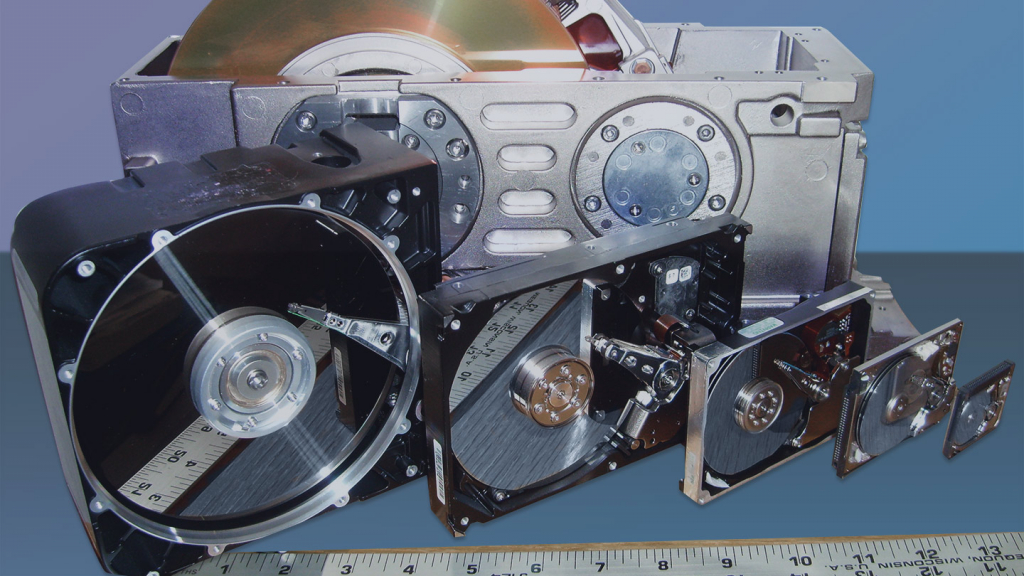
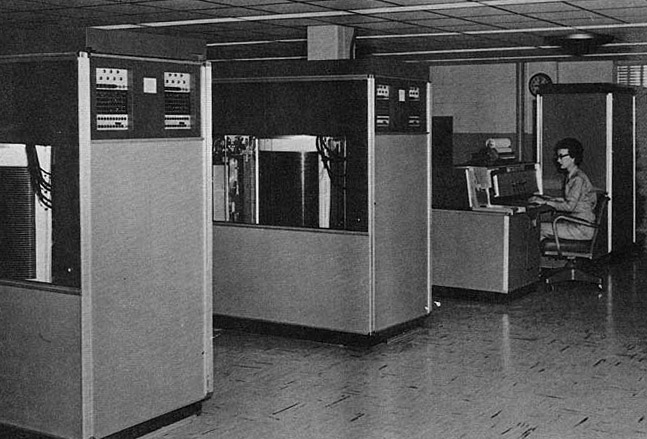
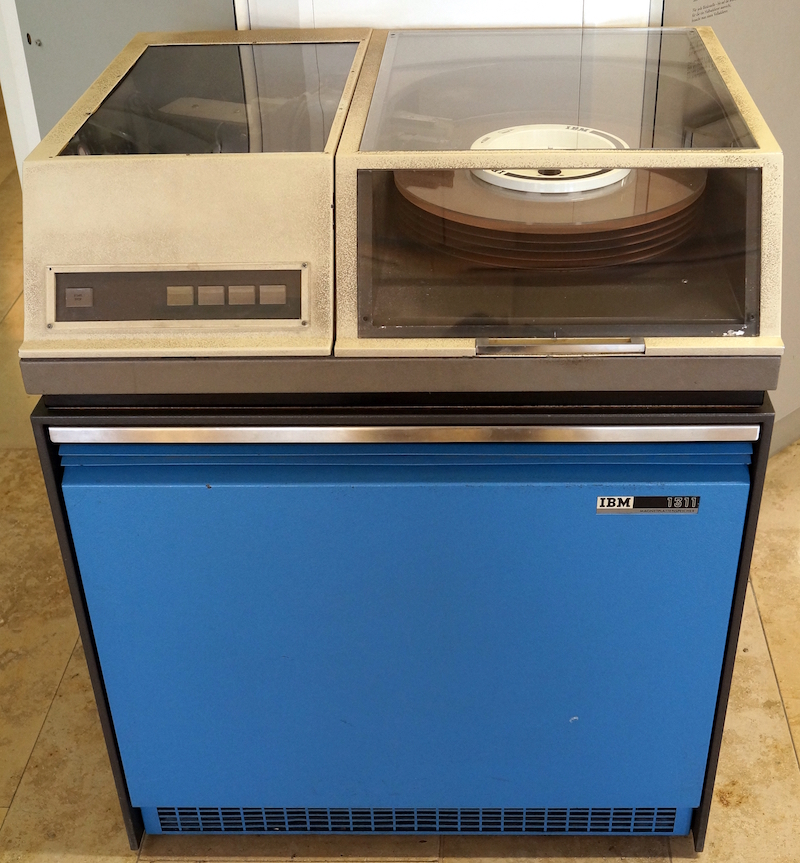
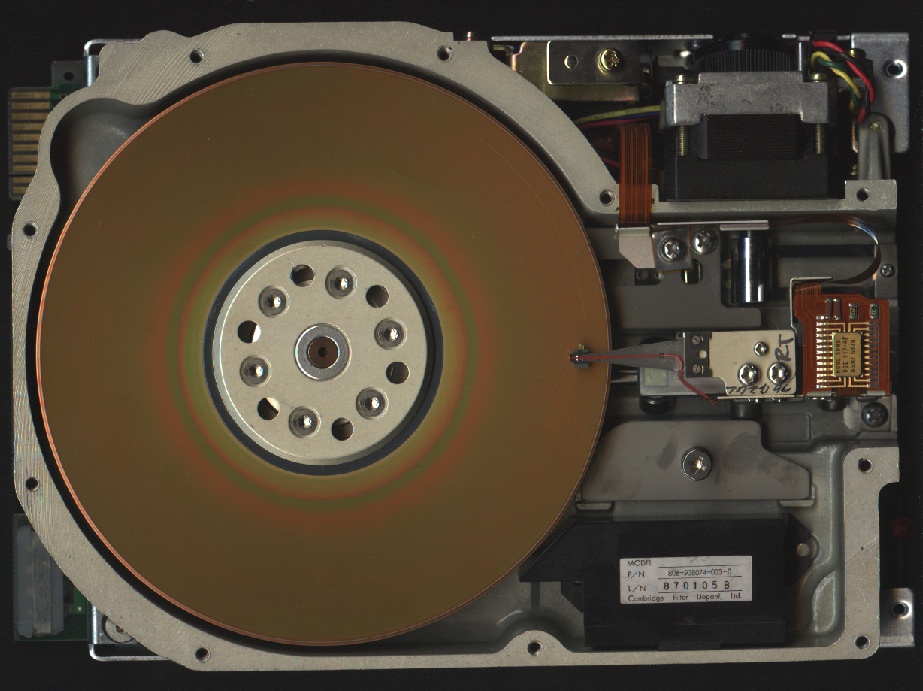
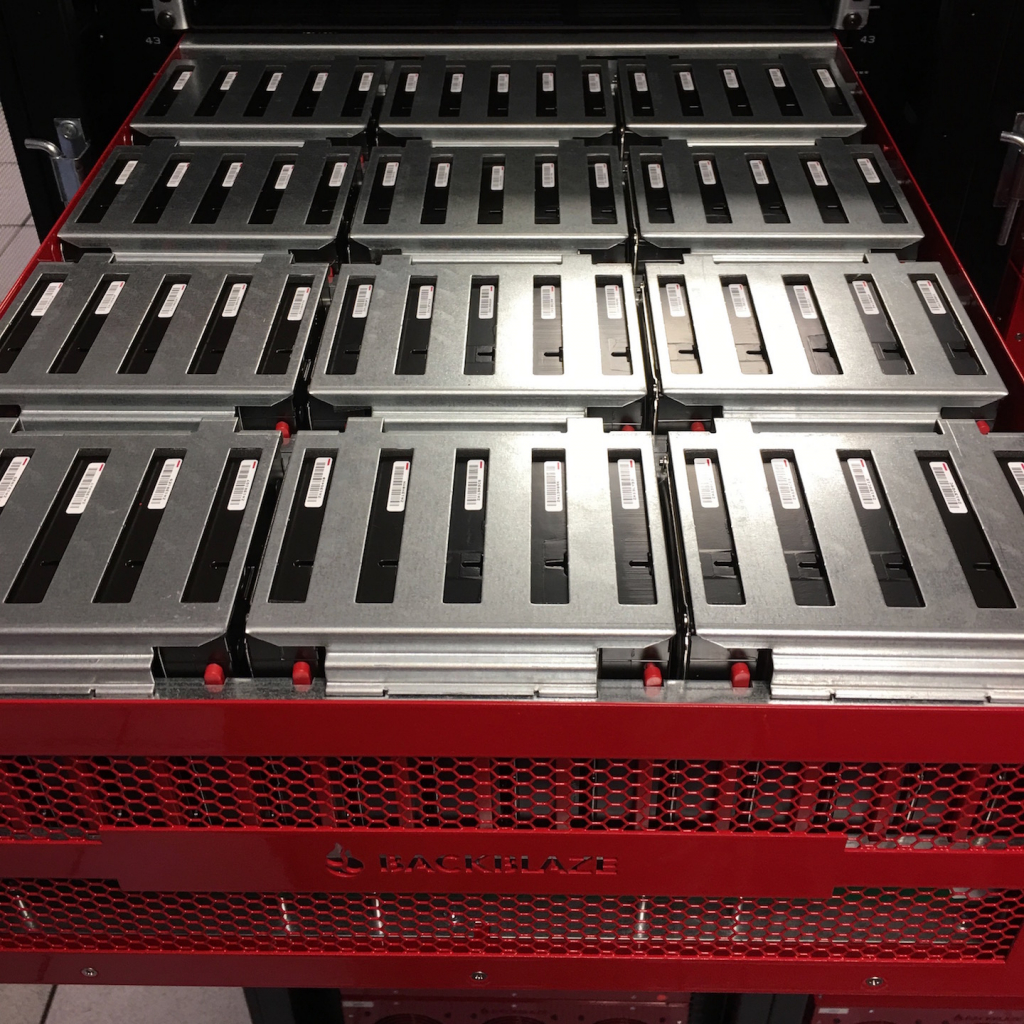
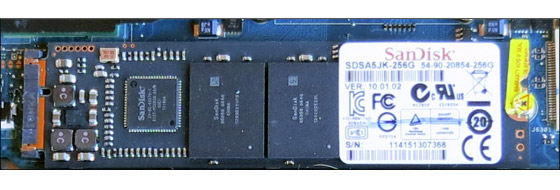












 Hard Drive Stats for Q3 2016: Less Is More
Hard Drive Stats for Q3 2016: Less Is More